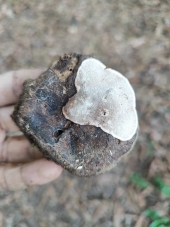I'm a tree hugger and I love growing mushrooms too, so sometimes I cut down big branches off my hardwoods to grow shiitake, oysters, lion's mane, etc. I also use trees and branches that fall down during storms, checking them carefully for pre-existing fungi. That way, I don't have to cut down any big oak or chinquapin trees.
Like Anne said, there are lots of other substrates besides logs. Every single time I go out, I'm always looking for free wood chips, cardboard, horse manure, sawdust, coffee grounds- stuff like that. On public land, I also look for wild oyster logs that I can fit in my car. Oysters are also easy to grow on wood pellets (for stoves) and unsprayed straw.
if you have access to cow manure compost, you might try almond agaricus. There is a strain that grows well in places like tropical South America where it can be grown in raised beds outside. Here's a link to how to grow it in boxes:
https://permies.com/t/33807/Growing-Portabellos-wild
You also might try getting a good field guide to mushrooms or joining a mushroom club for a foray. You can really improve your ID skills rapidly this way and collect all kinds of good food and medicine in no time.
Finally, Paul Stamets has two books on this topic:
Growing Gourmet and Medicinal Mushrooms and
Mycelium Running. Good luck!







